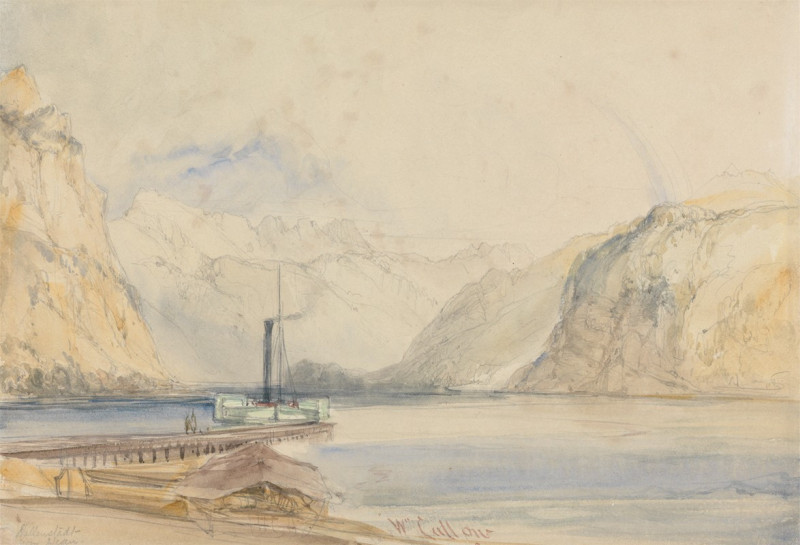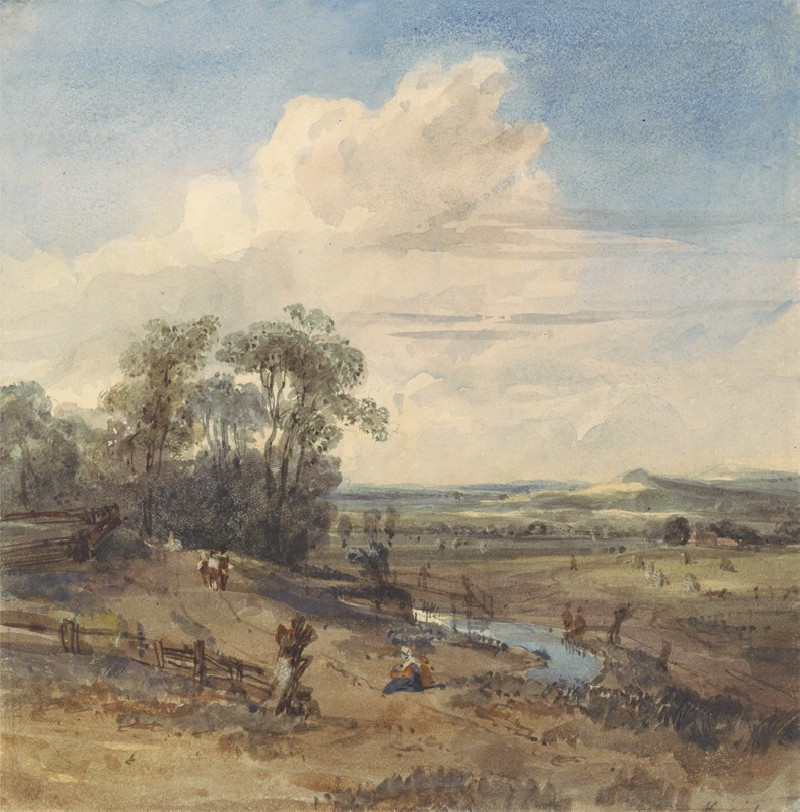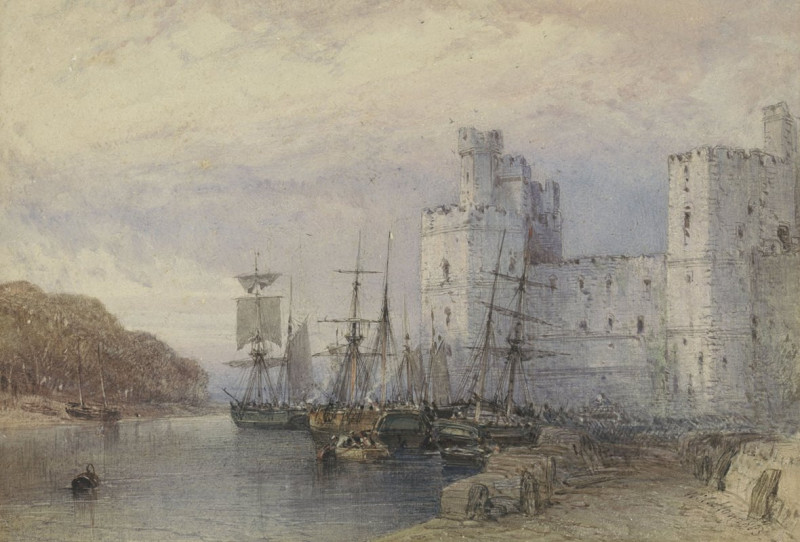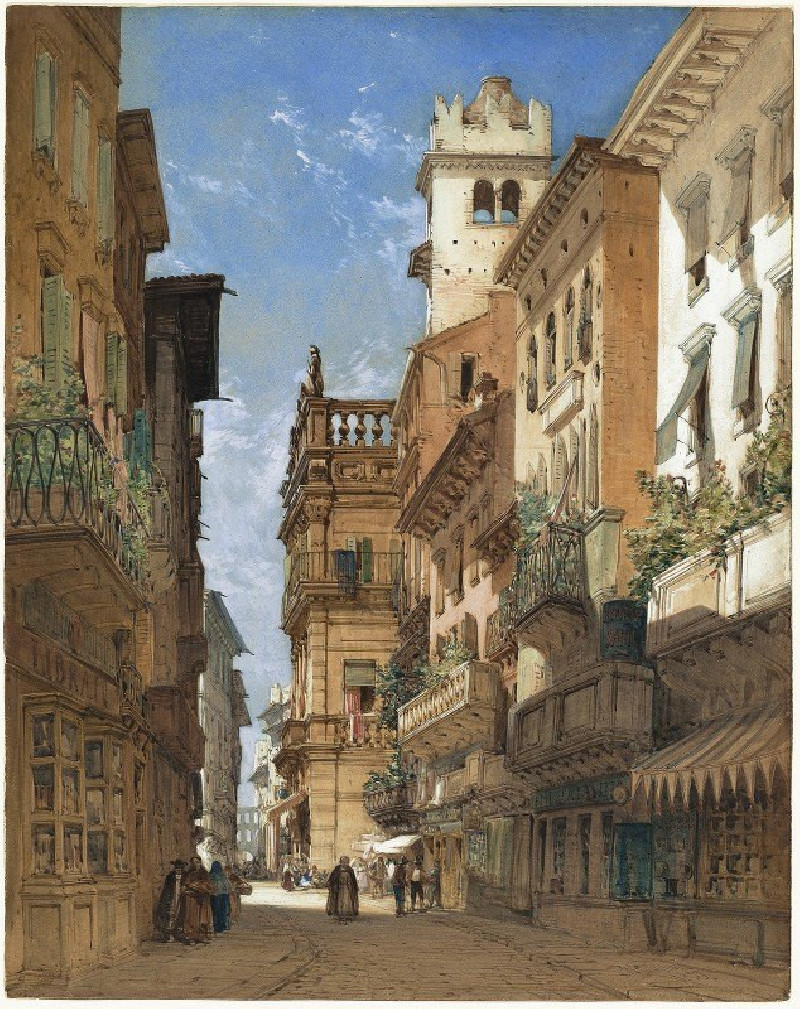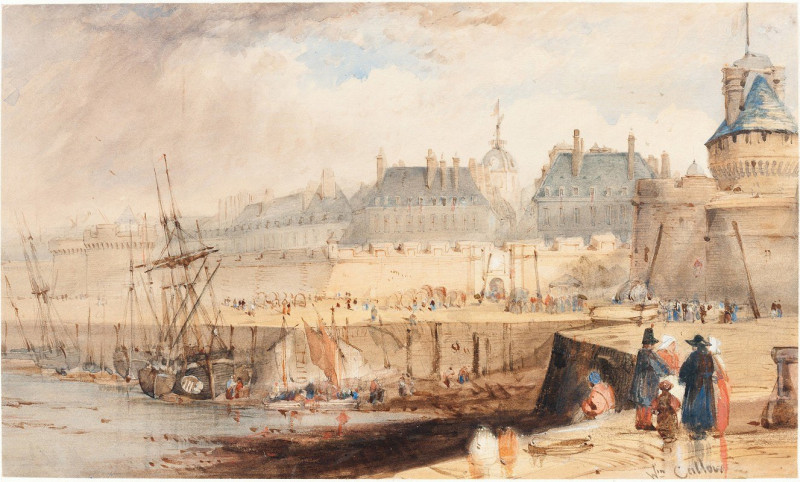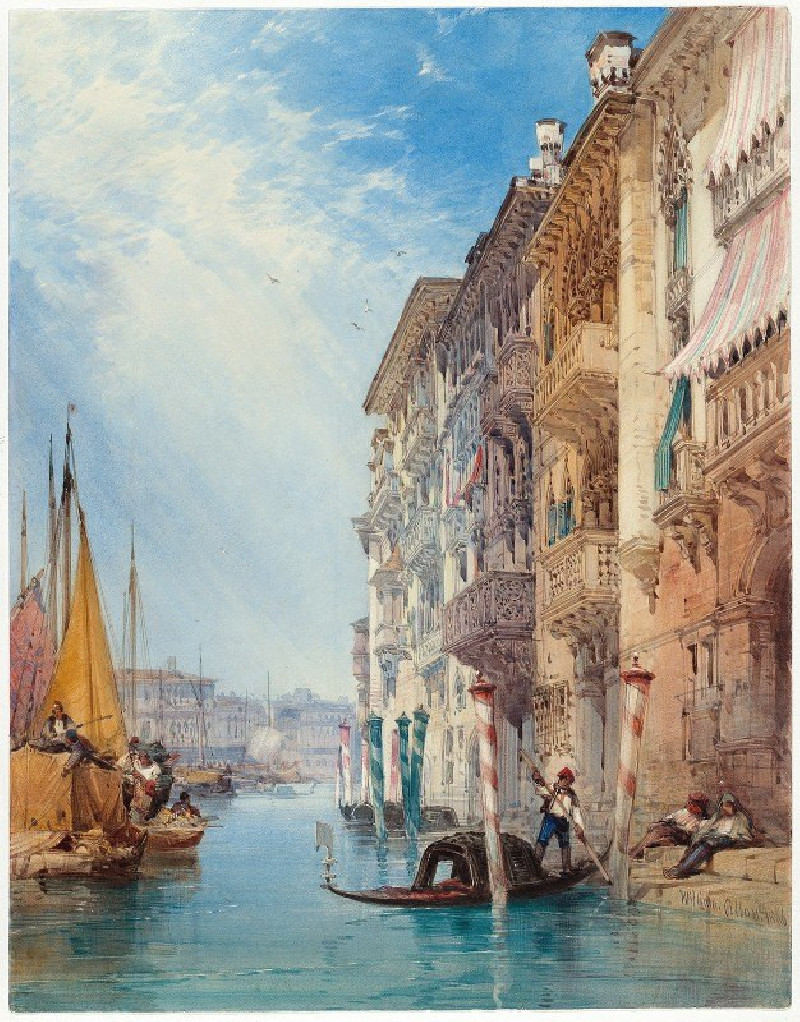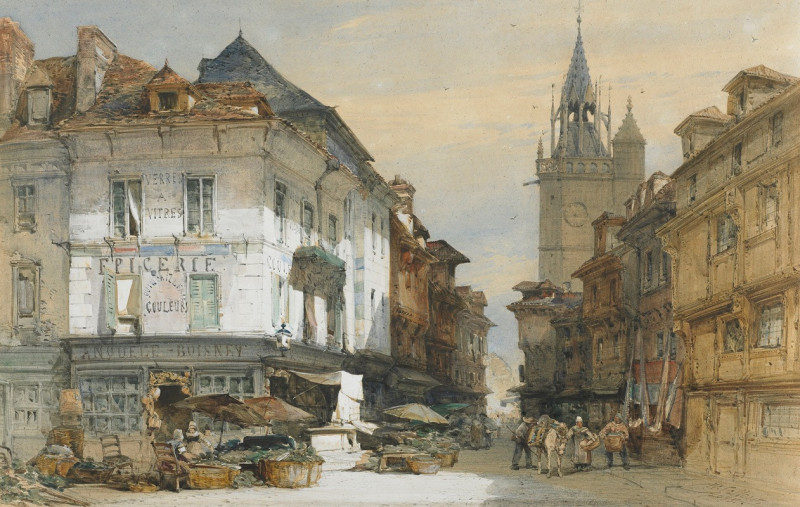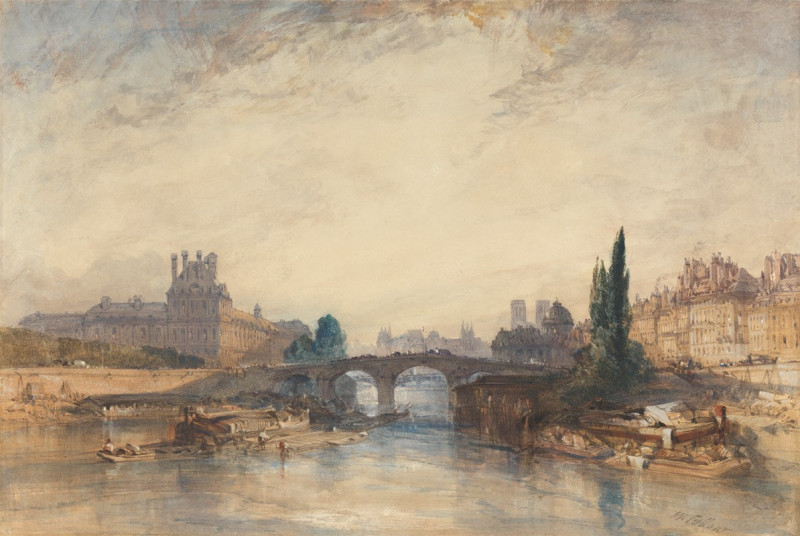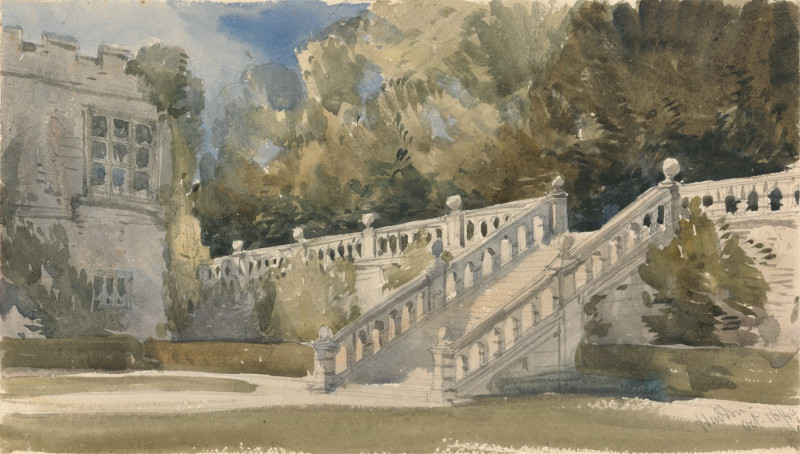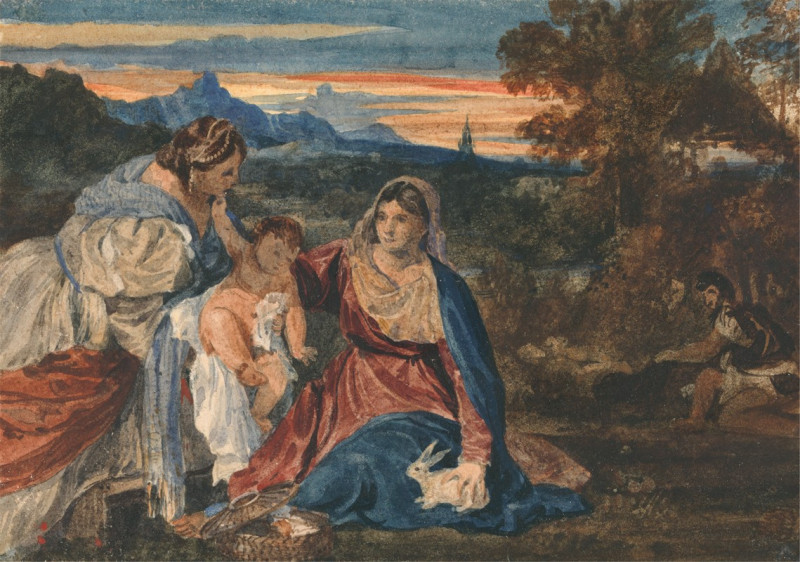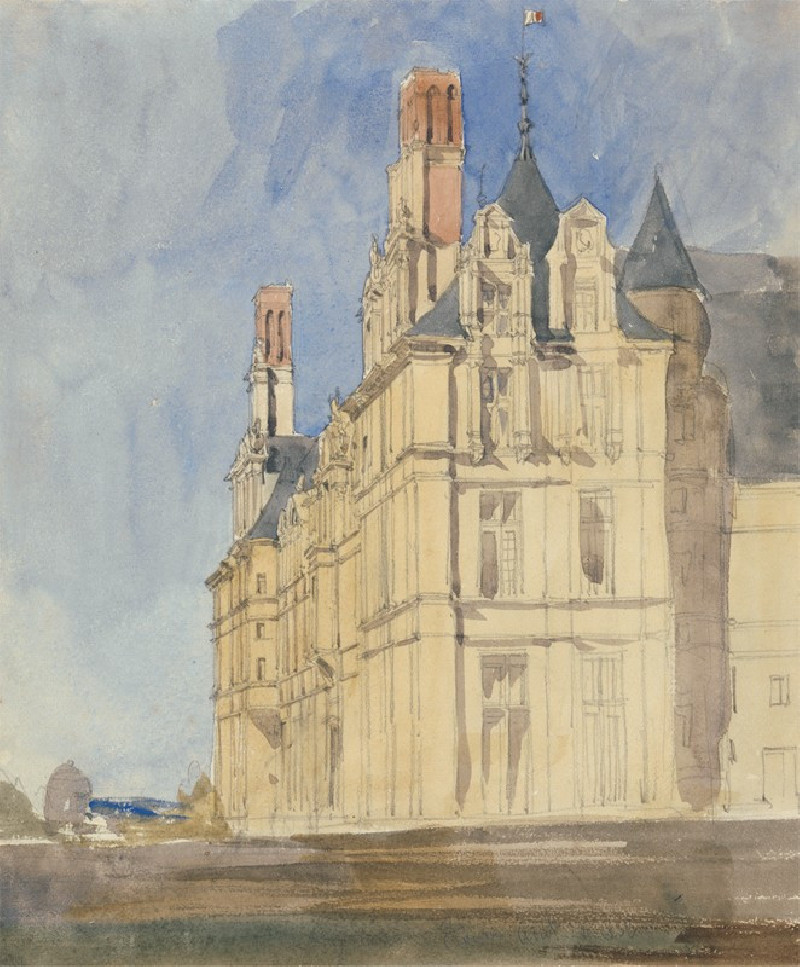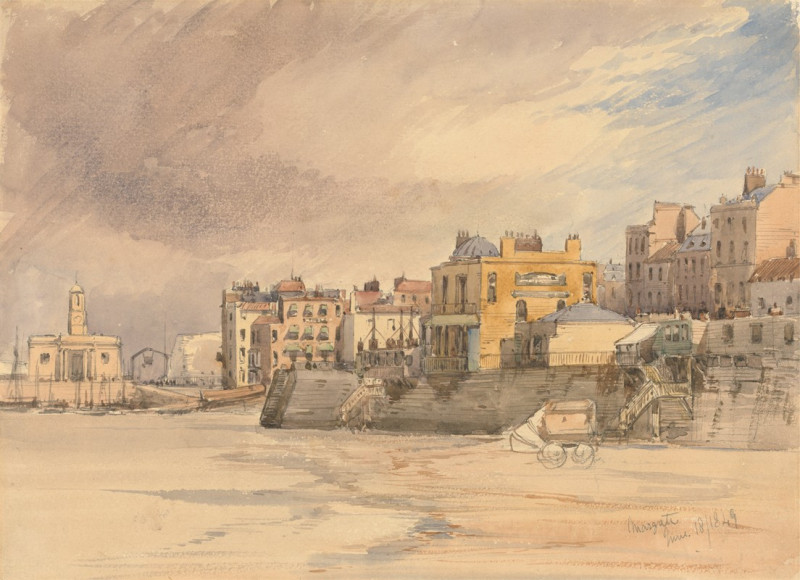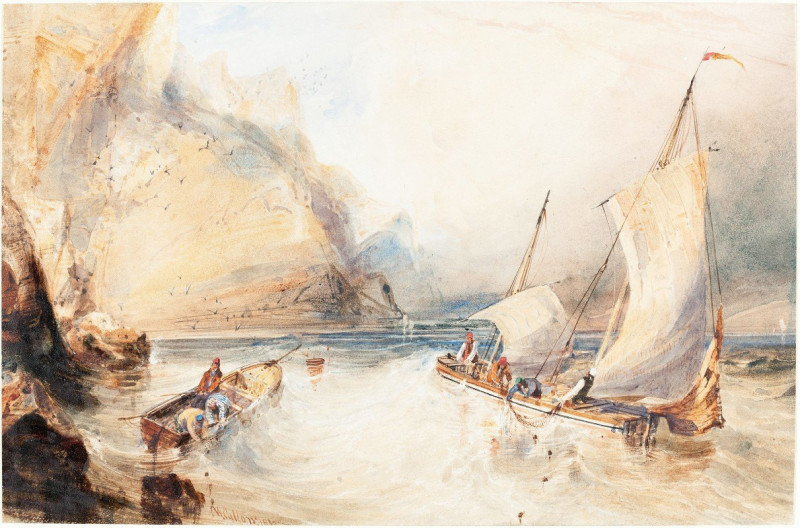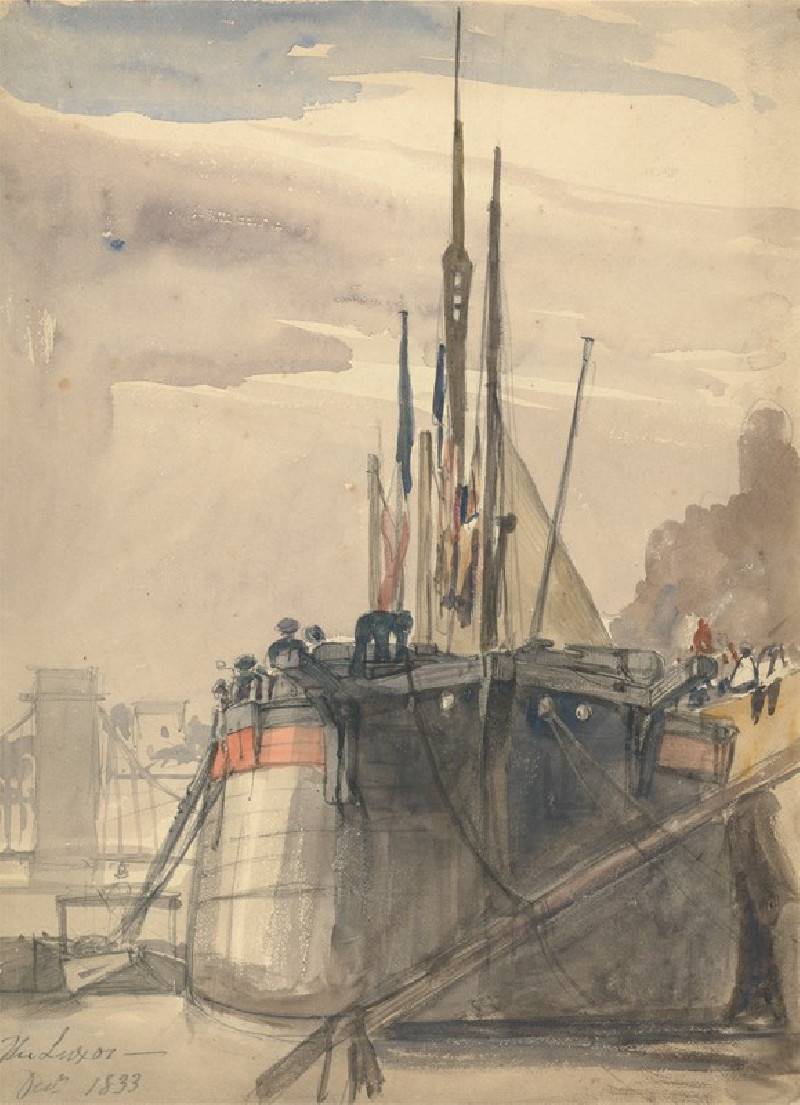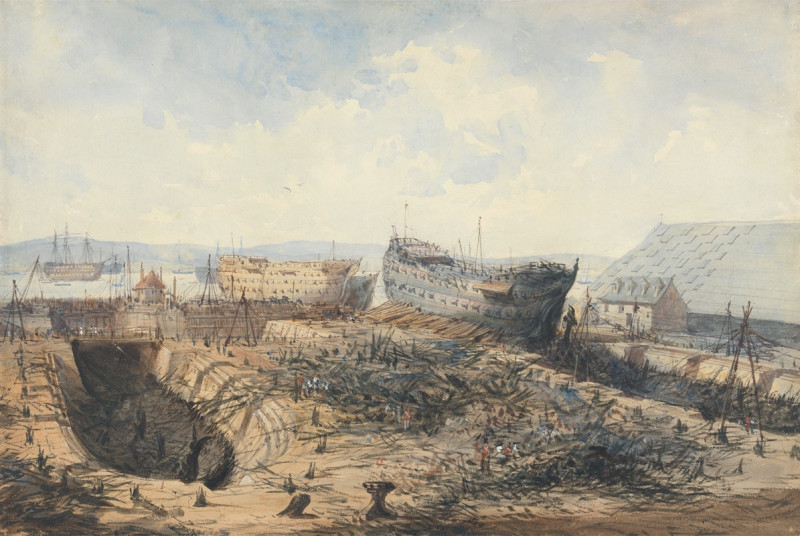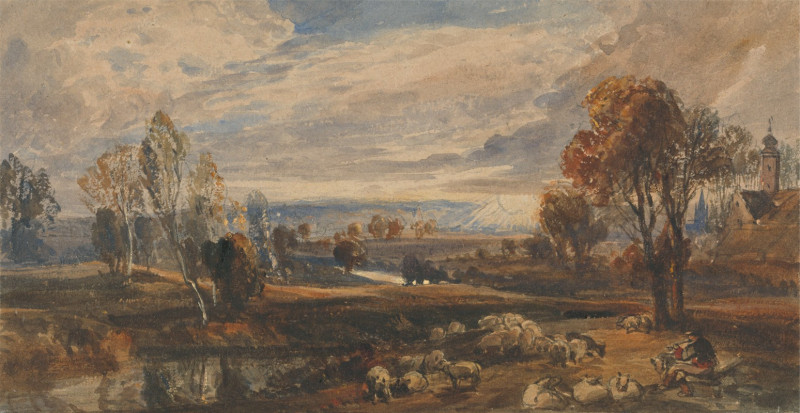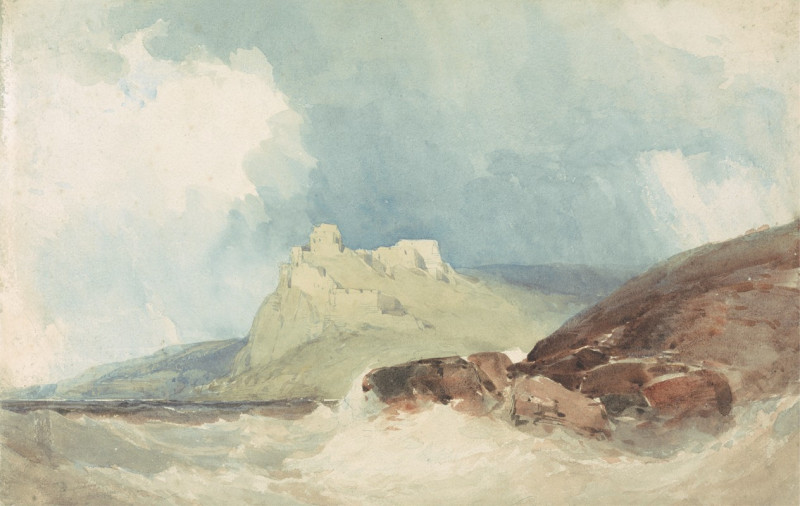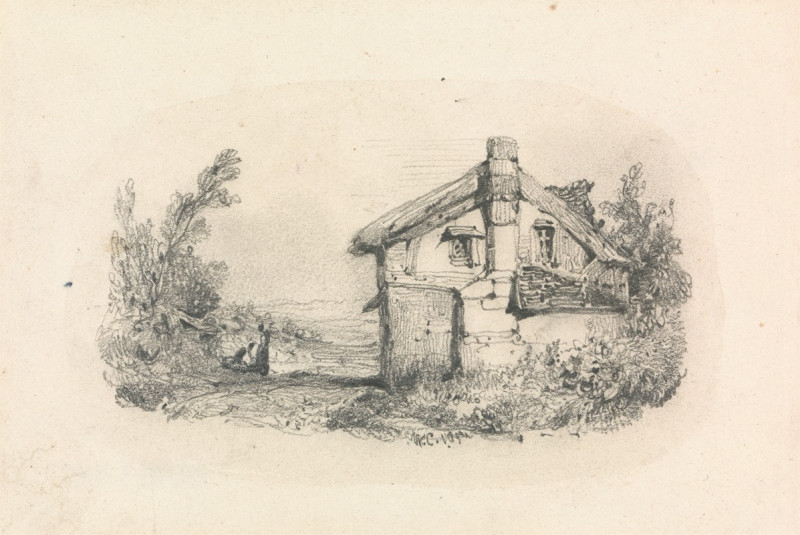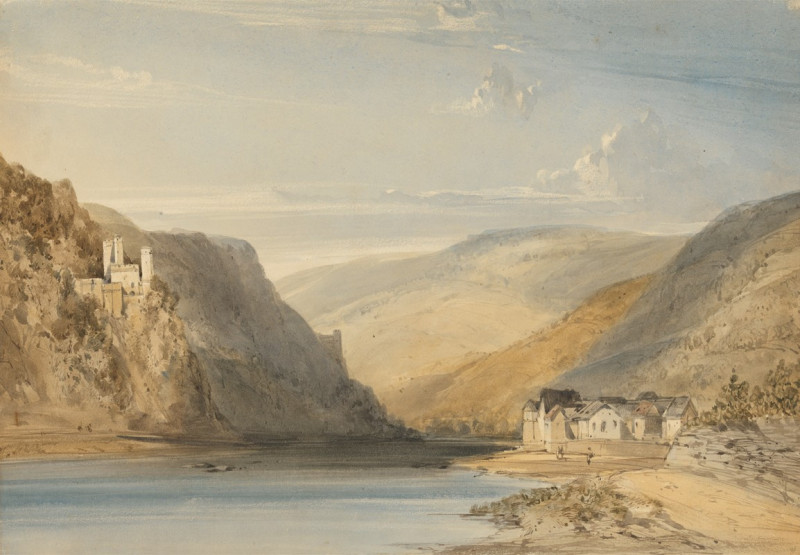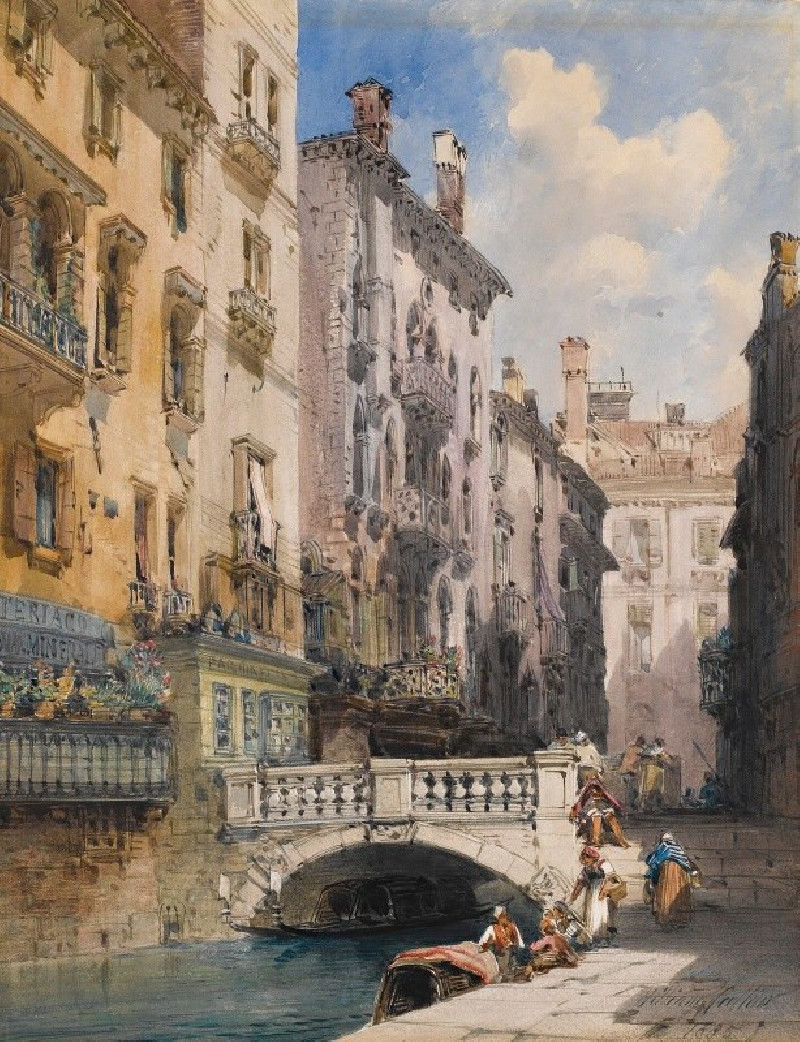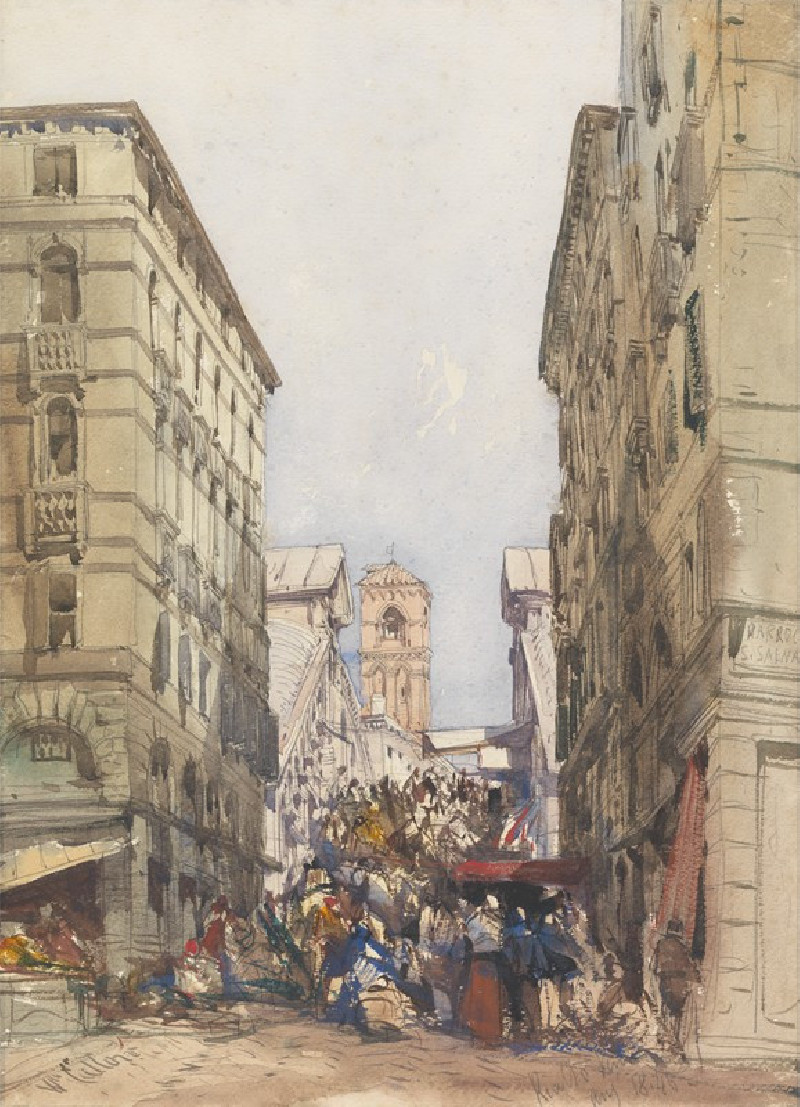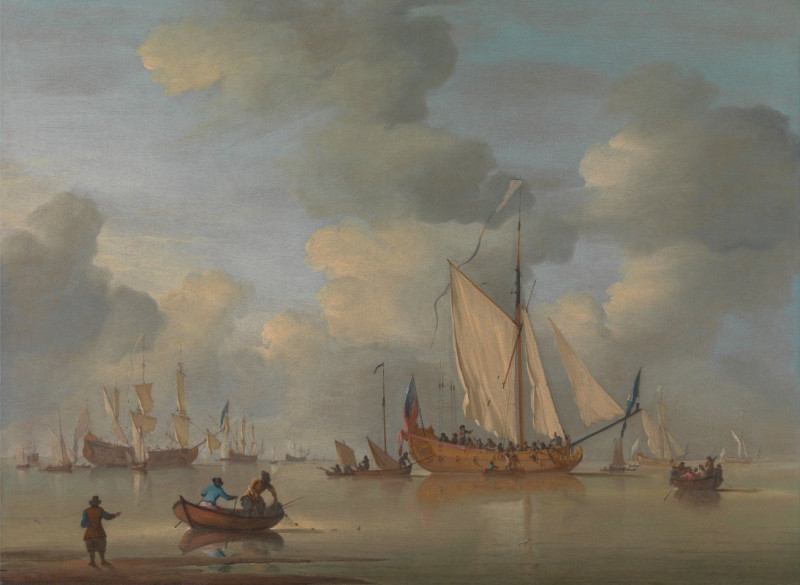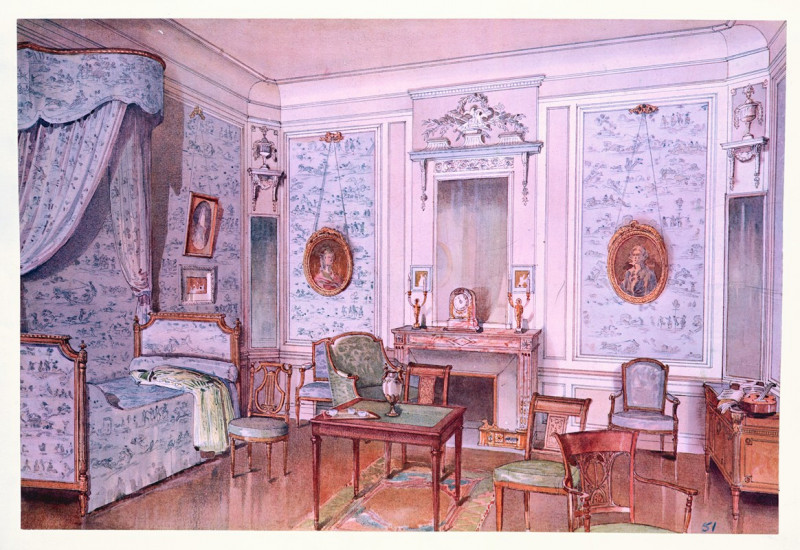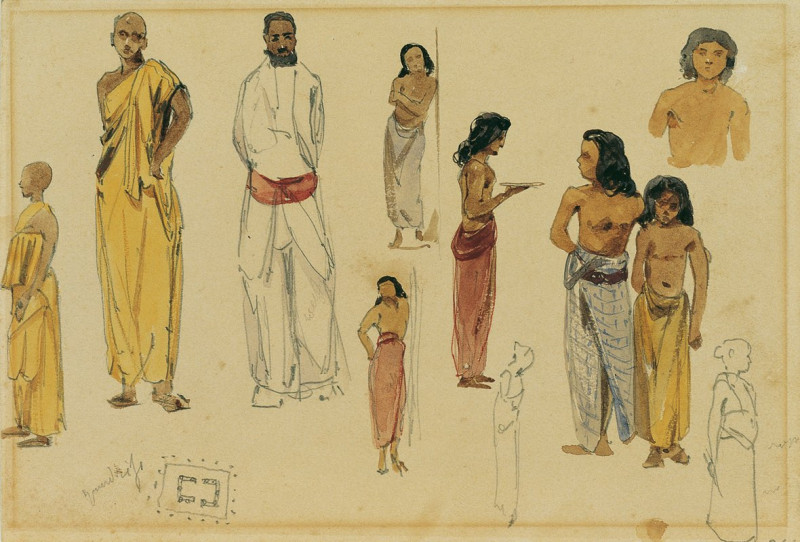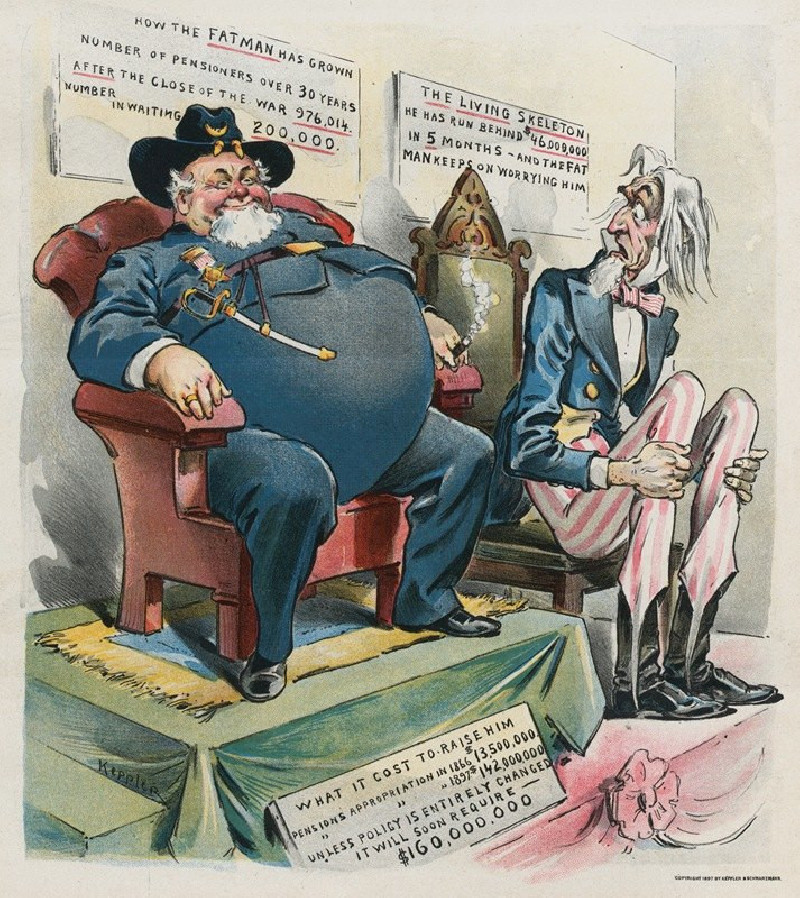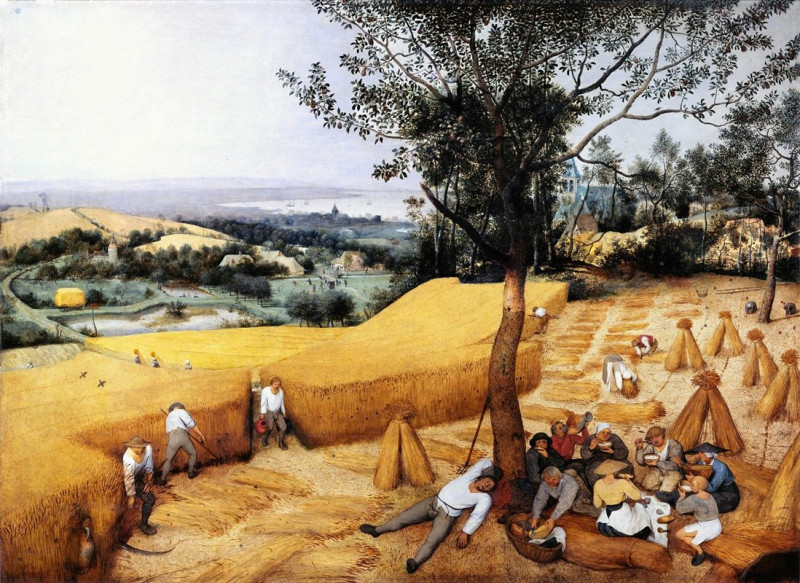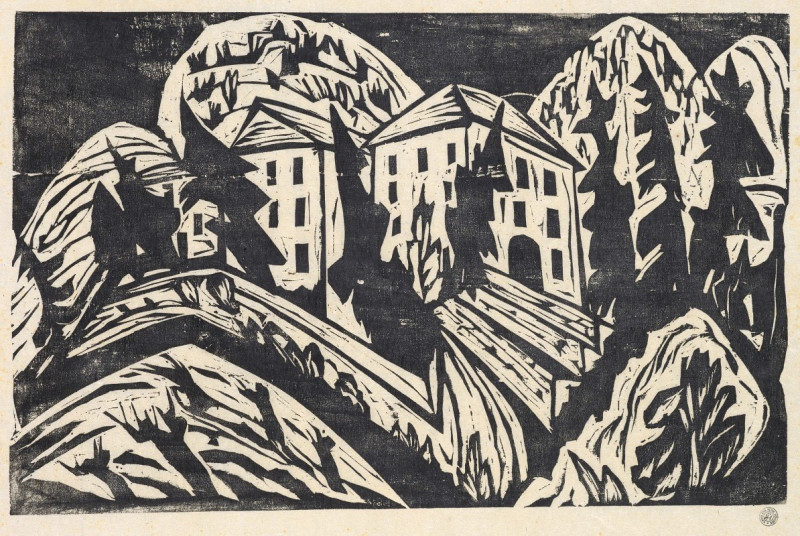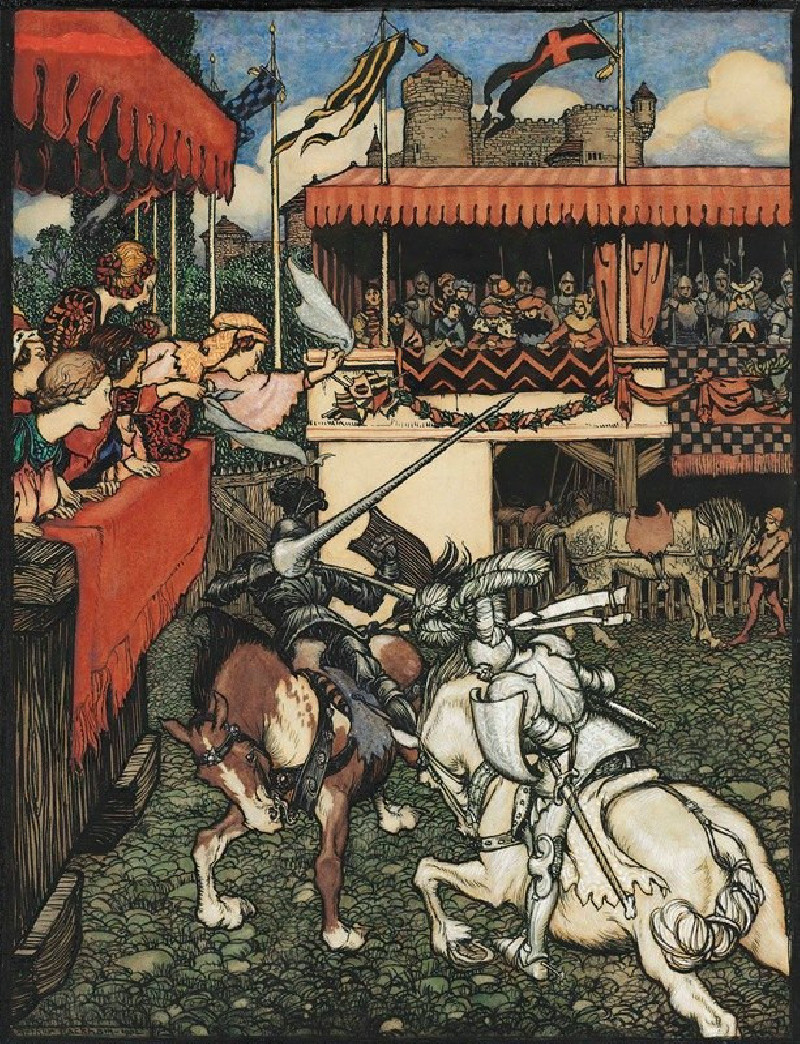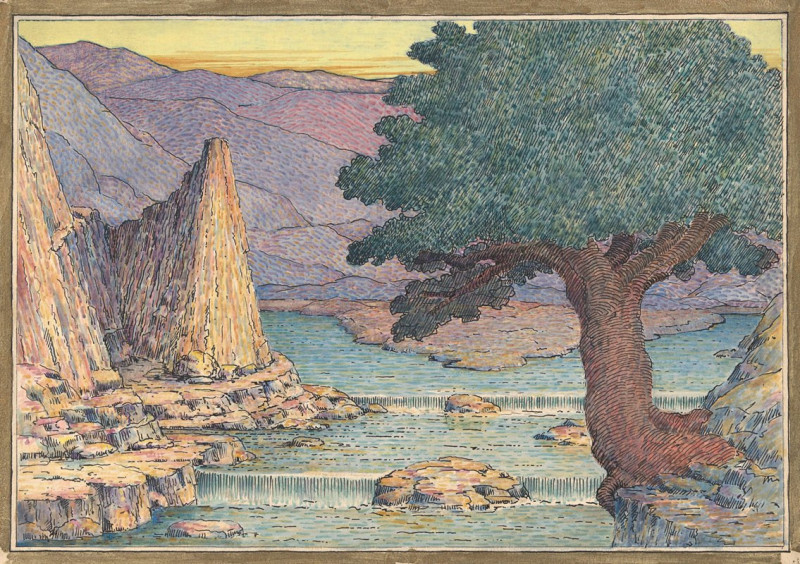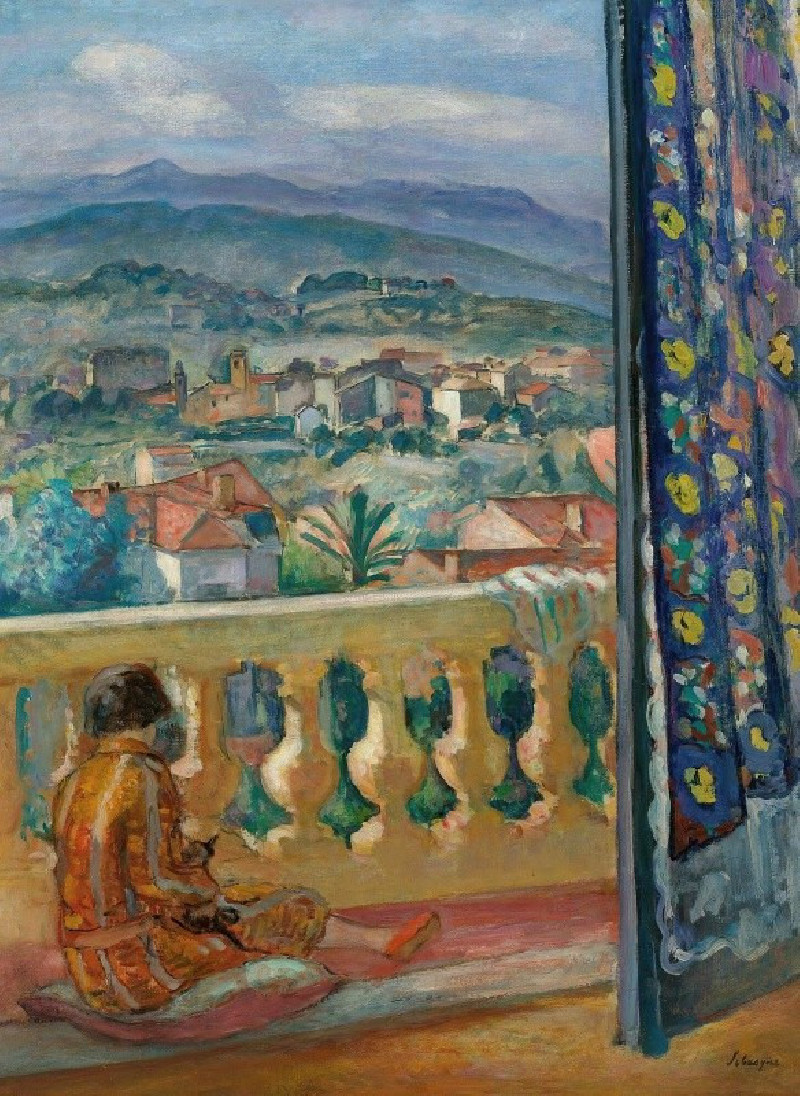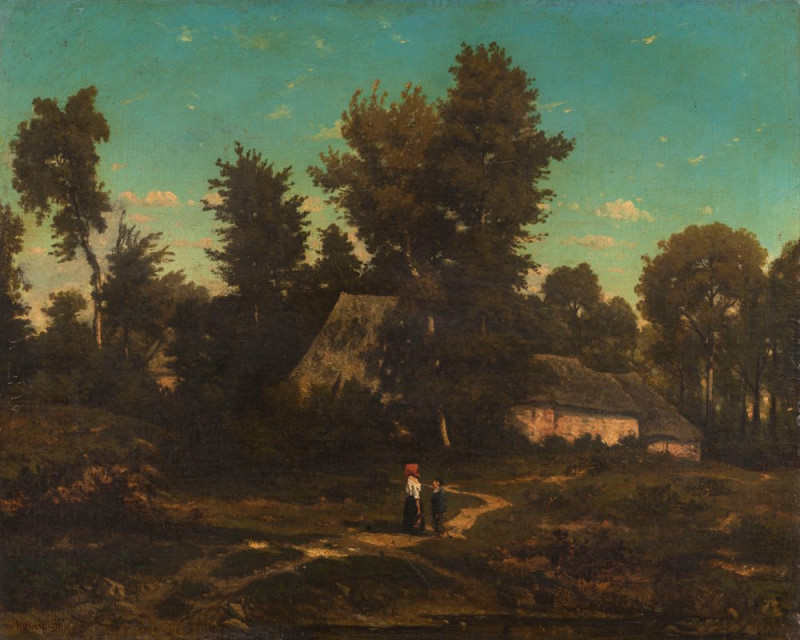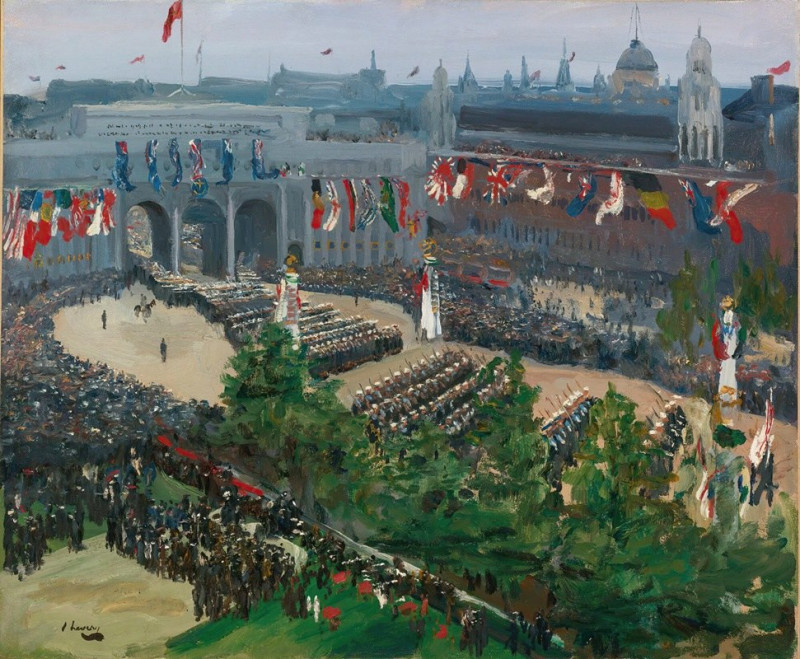Villeneuve lez Avignon (1840)
Technique: Giclée quality print
Recommended by our customers
More about this artwork
"Villeneuve lez Avignon" by William Callow is a captivating watercolor painting that takes us back to 1840, beautifully capturing a serene moment along the banks of a river in southern France. Through Callow's masterful brushwork, the scene unfolds with an impressive medieval tower standing prominently at the edge of the water, its robust form contrasting with the soft, expansive sky above.In the foreground, several boats gracefully line the calm waters, one notably filled with figures clad in red, suggesting the vibrant life of local river workers or fishermen. These individuals, accompanied by their relaxed postures and casual interaction, add a layer of everyday human activity to the otherwise tranquil landscape.Beyond the tower, the painting extends to a hillside adorned with more architectural structures, possibly a continuation of the village or a fortress, which gently recedes into the distance. The soft, earthy tones of the buildings and the natural landscape encapsulate the warmth of the region, while the delicate blue of the sky filled with wispy clouds brings a light, airy feel to the scene."Villeneuve lez Avignon" is a testament to Callow's ability to blend architecture and nature, capturing both the quiet majesty of historical sites and the gentle, rhythmic flow of riverine life.
Delivery
Returns
William Callow was an English landscape painter, engraver and watercolourist.
Callow was born in 1812. July 28 in Greenwich. He studied with the artist Copley Fielding, where he learned the technique of en plein air sketching. He studied under Theodore and Thales Fielding, where he learned to color prints and make aquatints, and from 1825 to 1827 was taught to paint in watercolor.



